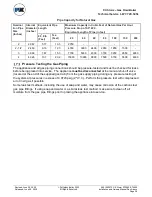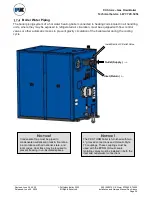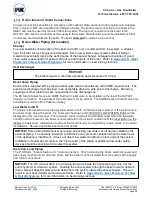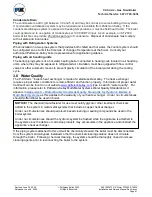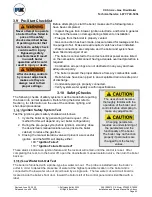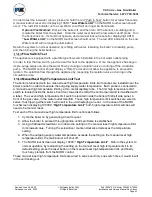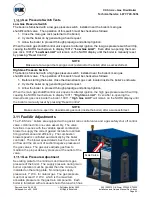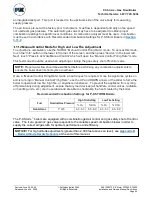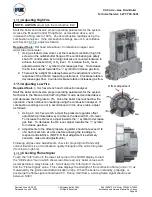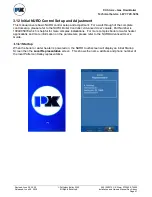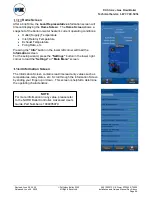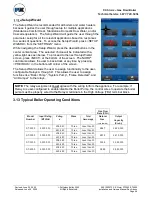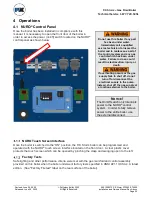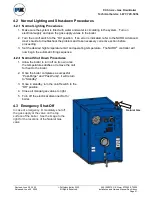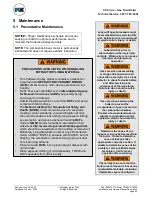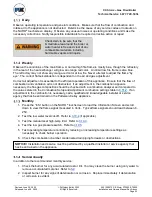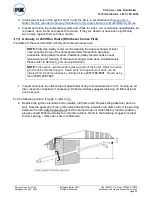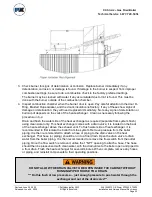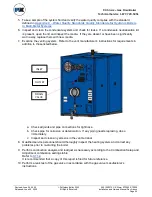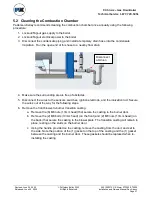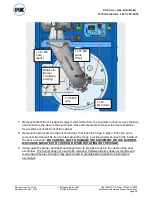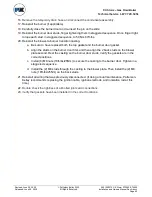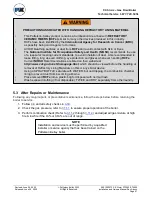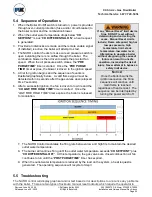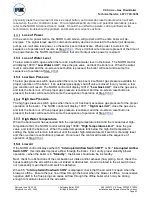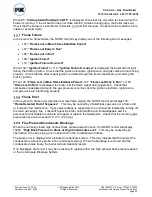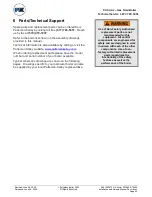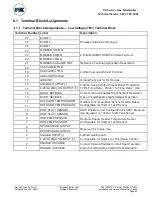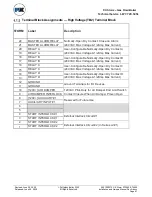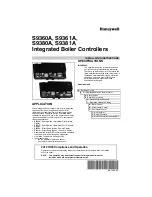
P-K Storm
TM
Gas Fired Boiler
Technical Service 1.877.728.5351
Revised: June 26, 2020
Released: June 26, 2020
©
Patterson-Kelley 2020
All Rights Reserved.
2691000273 P-K Storm ST2500-ST4000
Installation and Owners Manual Rev A.docx
Page 52
5 Maintenance
5.1 Preventative Maintenance
Lockout/Tagout procedure must
be employed when servicing this
unit. Failure to do so could result
in electrocution, injury, or death.
Label all wires prior to
disconnection when servicing
controls. Wiring errors can cause
improper and dangerous
operation.
Use care when reassembling
main gas line and ensure all
connections are tight. Use a leak
detector to check for leaks before
and after servicing any
component of the gas piping.
Failure to do so could result in
injury or death.
Use care when servicing the
boiler to prevent the
accumulation of gas in or around
the combustion chamber.
Pockets of accumulated gas are
subject to combustion and/or
explosion which could result in
injury or death.
Determine the cause of any
lockout or errors before resetting
the boiler. If able to determine
cause of lockout, take
appropriate corrective action. If
unable to determine cause of the
problem, call a qualified service
technician. Verify proper
operation after servicing.
Check daily to be sure that the
boiler area is free and clear of any
combustible materials, including
flammable vapors and liquids.
NOTICE!
Proper maintenance schedule and record
keeping is critical for optimum performance and to
maintain the Patterson-Kelley warranty.
NOTE:
The combustion blower motor is permanently
lubricated and does not require periodic lubrication.
PRECAUTIONS ASSOCIATED WITH HANDLING
REFRACTORY LINING MATERIAL
• This Patterson-Kelley product contains a Combustion
Area lined with
REFRACTORY CERAMIC FIBERS
(RCFs)
similar to many other devices produced in this
industry.
• RCFs have been identified by the
International Agency
for Research on Cancer (IARC)
as possibly being
carcinogenic to Humans.
• AVOID breathing particles or dust from
RCFs
and avoid
contact with Skin or Eyes.
• The
National Institute for Occupational Safety and
Health (NIOSH)
recommends the use of a respirator
meeting current standards, to avoid inhalation of dust.
Also recommended is loose fitting, long sleeved clothing,
eye protection and gloves whenever handling
RCFs
.
Current
NIOSH
Recommendations are listed on their
website at
http://www.cdc.gov/niosh/homepage.html
,
which should be viewed before the handling or removal of
Refractory Lining Materials on this or any similar device.
• Using a SPRAY BOTTLE, saturate with WATER; but not
dripping, the combustion chamber lining to prevent dust
from becoming airborne.
• Place removed
RCFs
into a plastic bag for disposal with
normal trash.
• Wash exposed clothing (if not disposable), TWICE and
DRY separately from other laundry.

